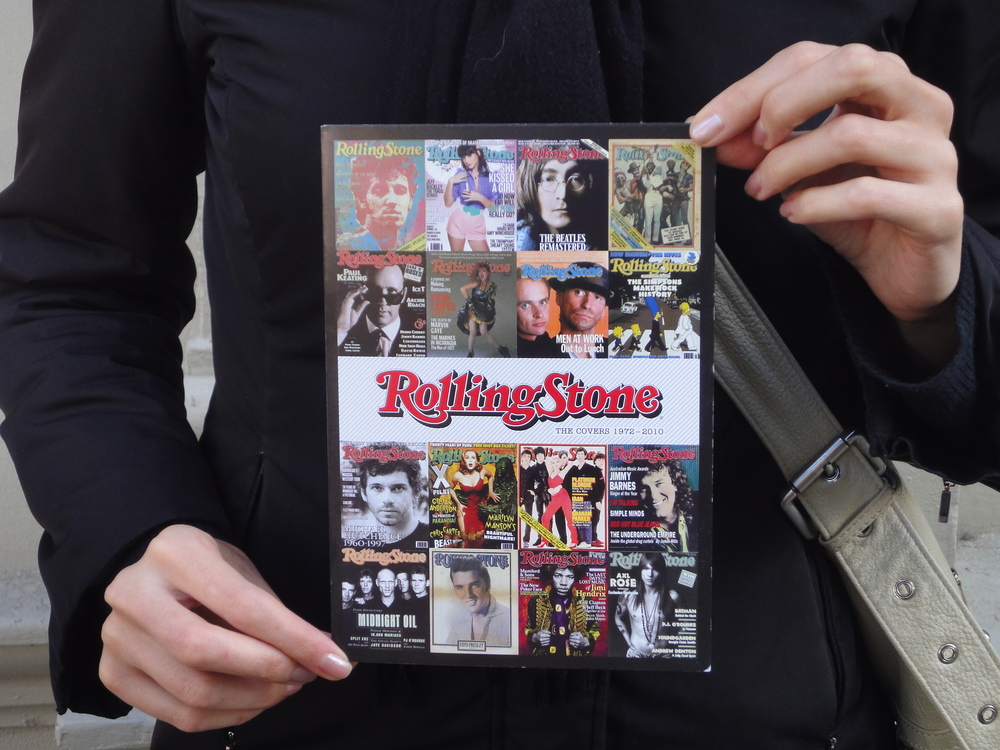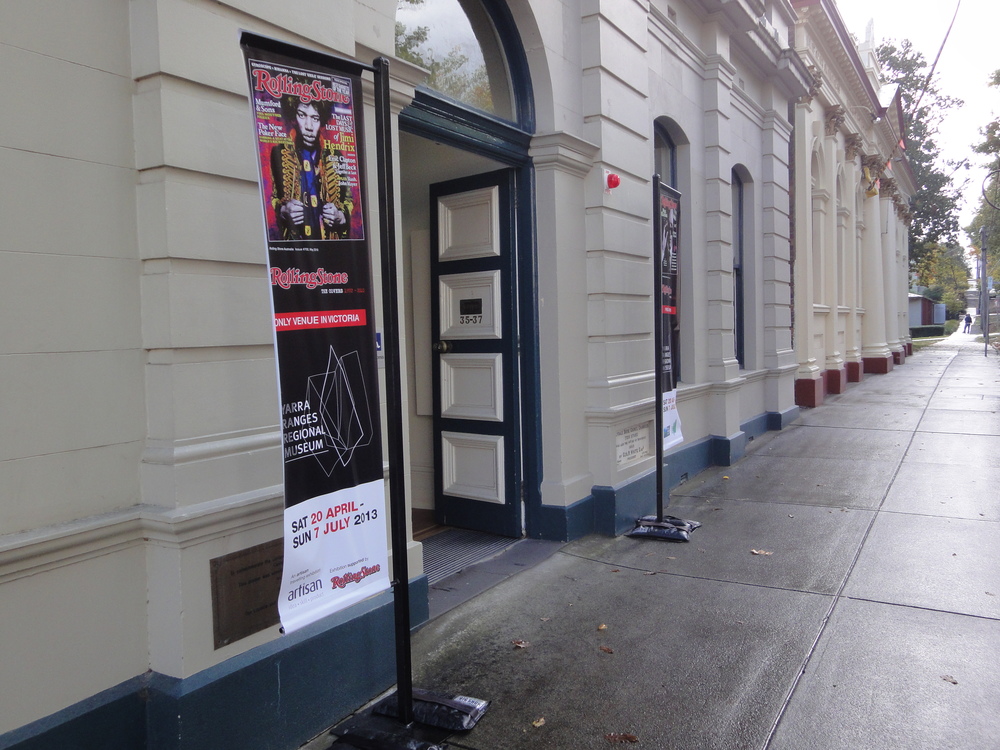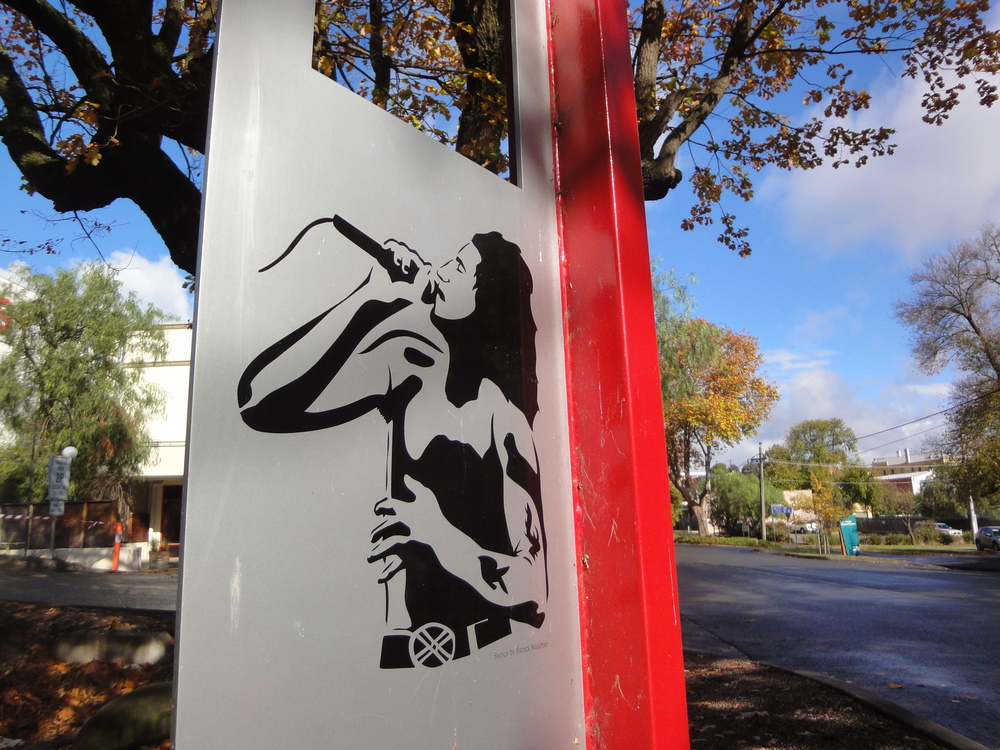‘I stake my hopes in 1972 in large part
on the energy, the wisdom and the conscience of young Americans.’ George
McGovern spoke with Rolling Stone during his presidential campaign in 1972. His
statement, emblazoned across the magazine’s cover (Issue 110, June 8), reeked
of McGovern’s yearning to grasp the motivations of America’s disenfranchised in
exchange for votes. What Rolling Stone may not have realised, was that this quote
was one of many to transcend Rolling Stone’s ambitions in occupying a
cutting-edge position in Australia’s heightening pop culture.
‘Rolling Stone: The Covers 1972-2010’ is
currently showing at Yarra Ranges Regional Museum. Curated by Kirsten
Fitzpatrick of artisan and presented by Rolling Stone, ‘Rolling Stone: The
Covers 1972-2010’ is a collection of original Rolling Stone Australia covers
that represents defining moments in music, art and politics spanning across
four defining decades. Not only is this exhibition a historical walk through
Rolling Stone’s presence in Australia, it’s a chance for visitors to be
acquainted, or re-acquainted, with the world’s most iconic pop culture magazine.

In 1967, Jann Wenner co-founded and
published Rolling Stone in the burgeoning counter-culture capital of San
Francisco. Its undeniable masthead was designed by Rick Griffin and the
magazine featured illustrations and photos from some of the magazine’s esteemed
contributors such as Ralph Sleadman and Annie Leibovitz. It wasn’t until 1972
when Rolling Stone graced Australia’s shores in newspaper format with the help
of Phillip Fraser, founder of Australia’s first teen pop publication Go-Set. Rolling
Stone, which was styled for its Aussie audience while navigating the murky
waters of tight censorship laws, evolved into the glossy magazine many read
today.
Across Yarra Ranges Regional Museum’s
walls is where visitors can expect to find famous faces and provocative headlines
plastered across Rolling Stone’s most influential covers. And, it’s these
headlines that shed light on the times and public opinion over the years too.
Covers from the 70s are smothered with household names such as Ray Charles,
Stanley Kubrick, Aerosmith, Janis Joplin, Jack Nicholson and Dolly Parton.
Skyhooks is also there, the first Australian band to feature on the cover of
Rolling Stone. These prominent faces are juxtaposed with an agenda for wielding
socio-political content, delivered through headlines such as ‘Anti-Nuclear
War’, to ‘Iran Aftermath’ and ‘Watergate’. Suzi Quatro can be found ‘Flex[ing]
her Leather’, while The Eagles open up about their ‘Good Year in Hell’.
Readers
only had to shell out 75 cents to digest articles that discussed these era-defining
events and celebrities. It seems like a miniscule cost to pay when visitors to
this exhibition consider Rolling Stone’s line-crossing style of journalism. Rolling
Stone identified the obvious overlap between music, art and politics. So, Wenner’s
editorial direction for his contributors was succinct and steadfast: produce
articles with word counts above 40,000, and ‘tell the truth’.

By the 80s, Rolling Stone rocketed skyward
to bring readers up-close and personal with The Police, Star Wars, Barry
Humphries, Men at Work, John Lennon, The Eurythmics. The magazine still had its
work cut out for itself: ‘Jim Morrison: He’s Hot, He’s Sexy, He’s Dead’, ‘Keith
Richards: No Regrets’, ‘The Who, The End’. One headline is another telling sign
of Rolling Stone’s ability to provoke: ‘Metal: It’s Loud, It’s Ugly, It Won’t
go Away’. Conversely, there was a rare
occasion when a musician flexed his influence to bend the magazine. Rolling Stone’s
masthead was rejuvenated in 1977 by Jim Parkinson. This new masthead was reworked
yet again, to include elements of the old, after Mick Jagger denounced the new
design.
As the 90s and Noughties crept up, so too
did the stakes for cutting-edge and credible editorial. While legendary figures
such as Kurt Cobain, Tupac Shakur and Michael Hutchence were immortalised in
print following their deaths, retrospective topics were explored – ‘Women of Rock’
and ‘The Last Days and Lost Music of Jimi Hendrix’. Plus there’s the eerie,
such as Kurt Cobain’s lasting quote to Rolling Stone one month before he killed
himself: ‘I’ve never been happier’.

‘Rolling Stone: The Covers 1972-2010’ cuts
into the evolution of popular culture and the magazine’s presence as a
risk-taking publication in Australia. As the relevance of print media (and
possibly popular culture) may be perceived as riding a gradual descent today, Rolling
Stone is still synonymous with producing compelling, and culturally relevant,
content. Who knows if Rolling Stone is going to be around in another 40 years’
time? If anything, it’ll be interesting to see whether Rolling Stone in
Australia rolls on, continuing its reign as the magazine’s most successful
edition outside the U.S.
‘Rolling Stone: The Covers 1972-2010’
runs from now until July 7, 2013 from 10am to 4pm daily at Yarra Ranges
Regional Museum, 35-37 Castella Street, Lilydale Victoria 3140. Entry is free
and programs are available for $2 each at the information desk.

